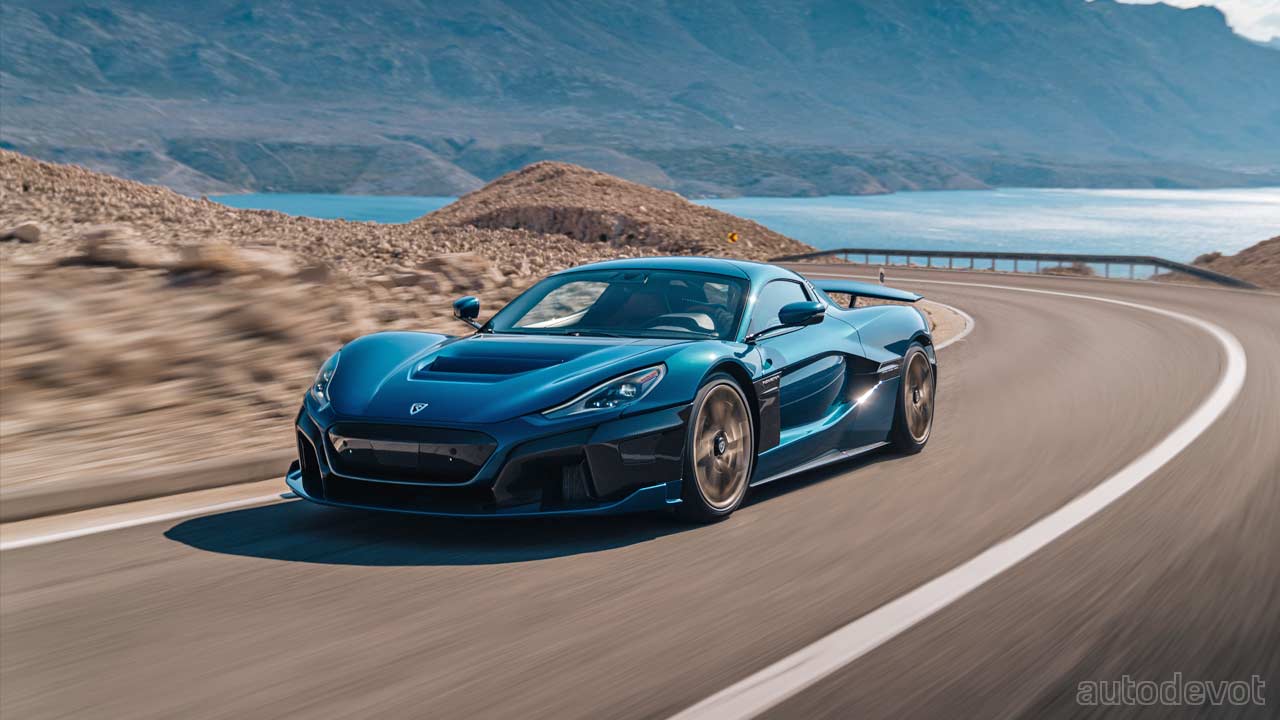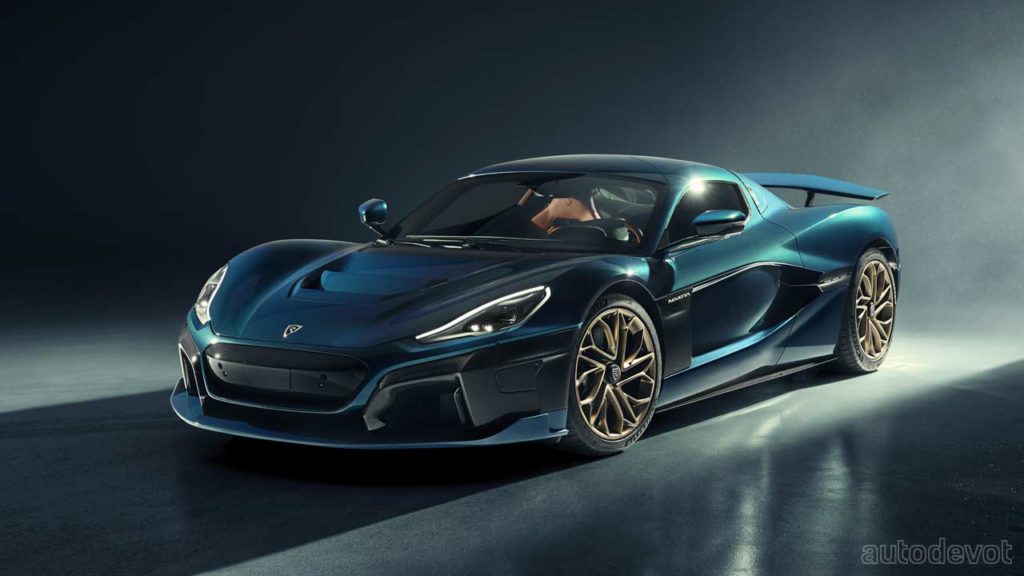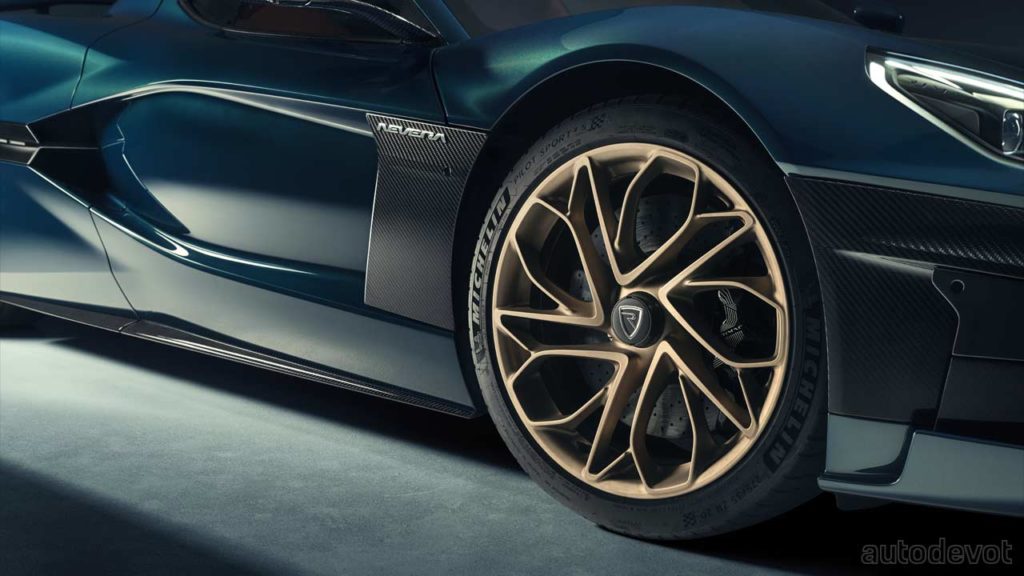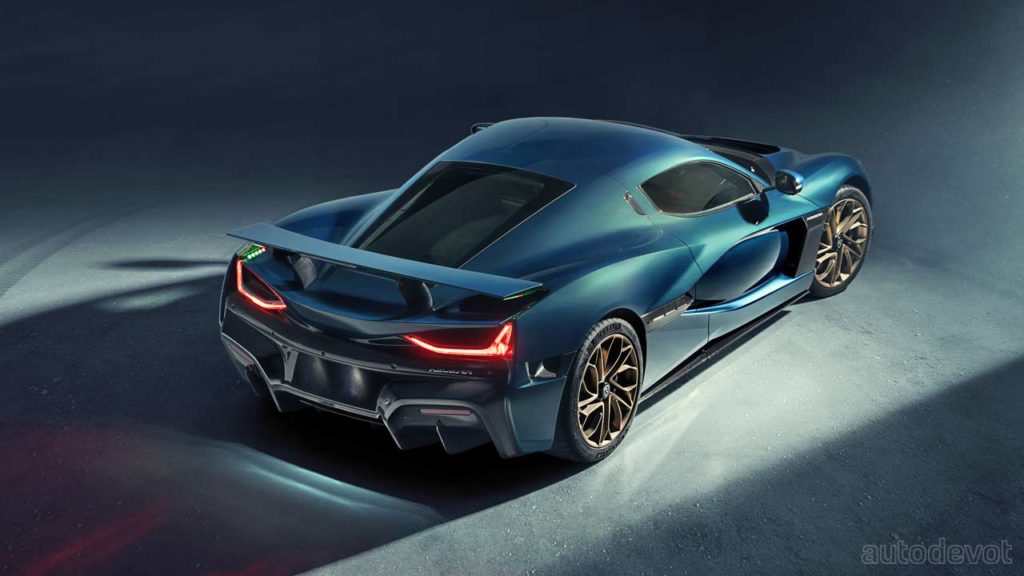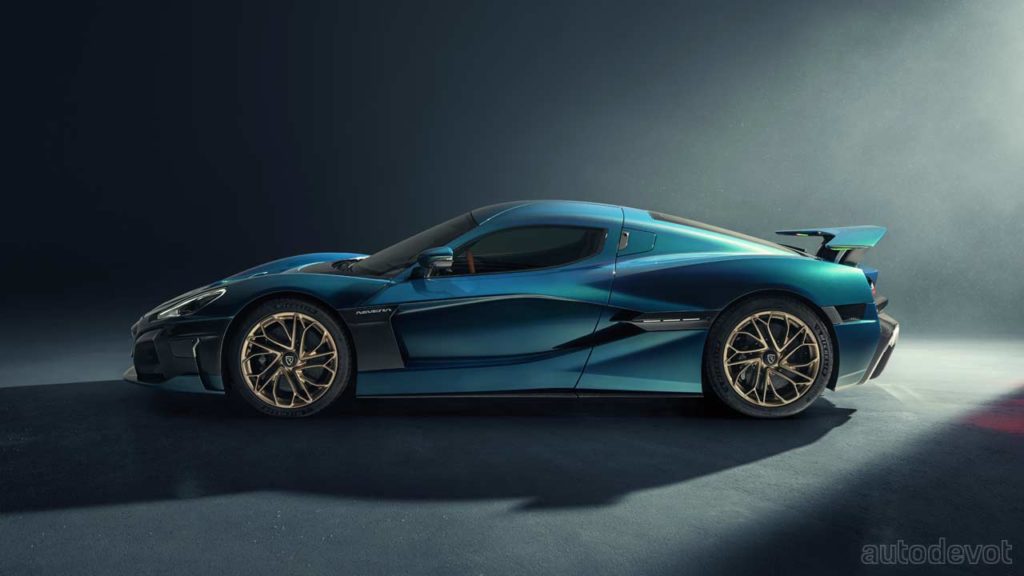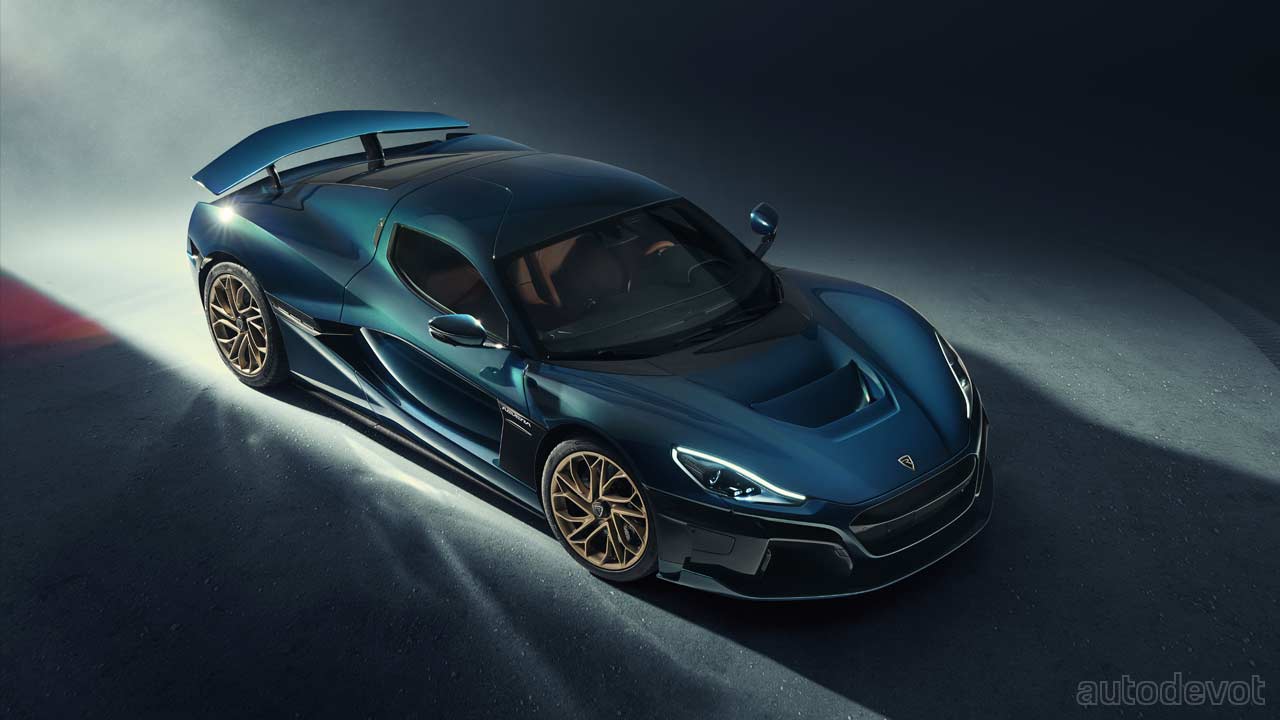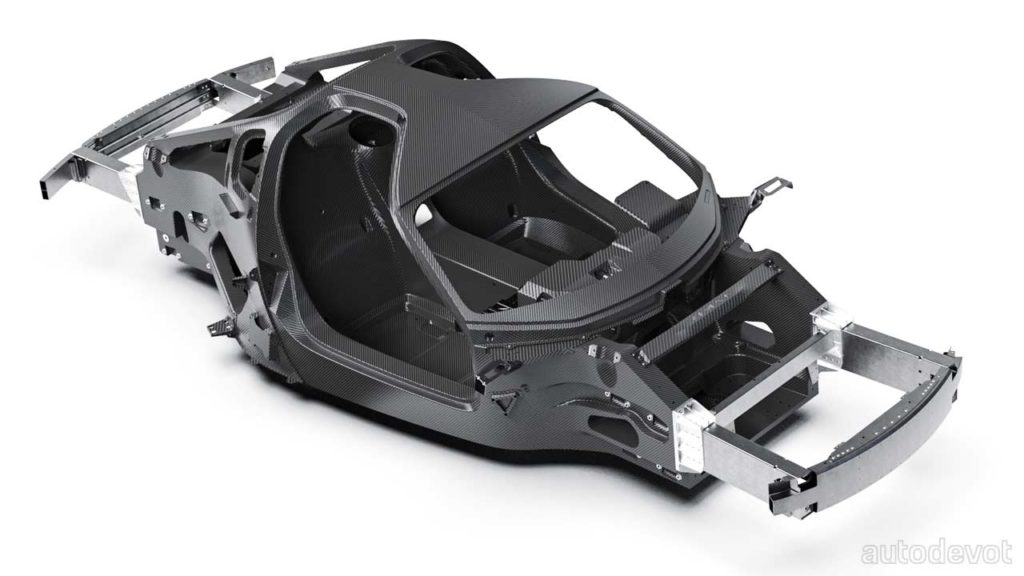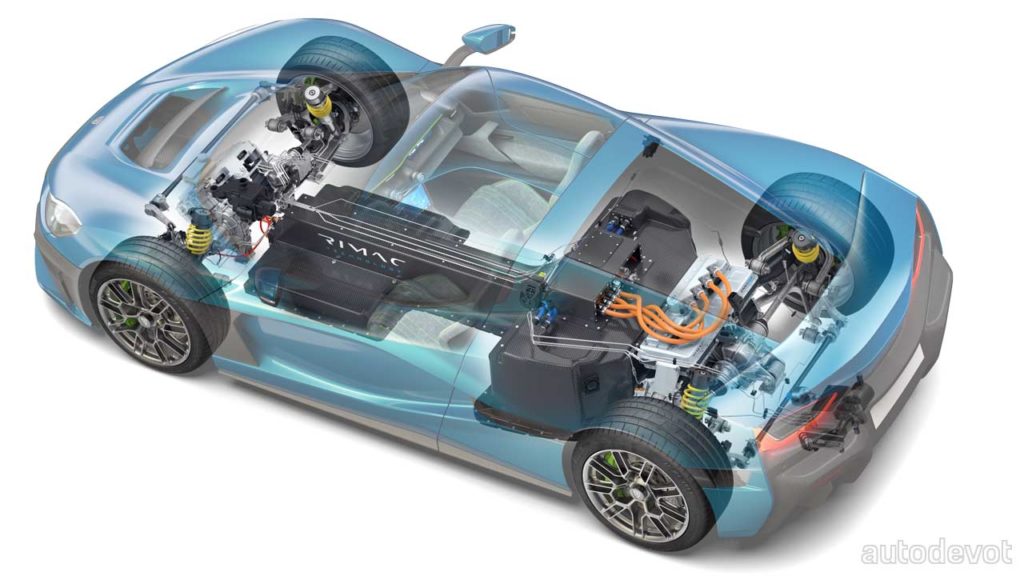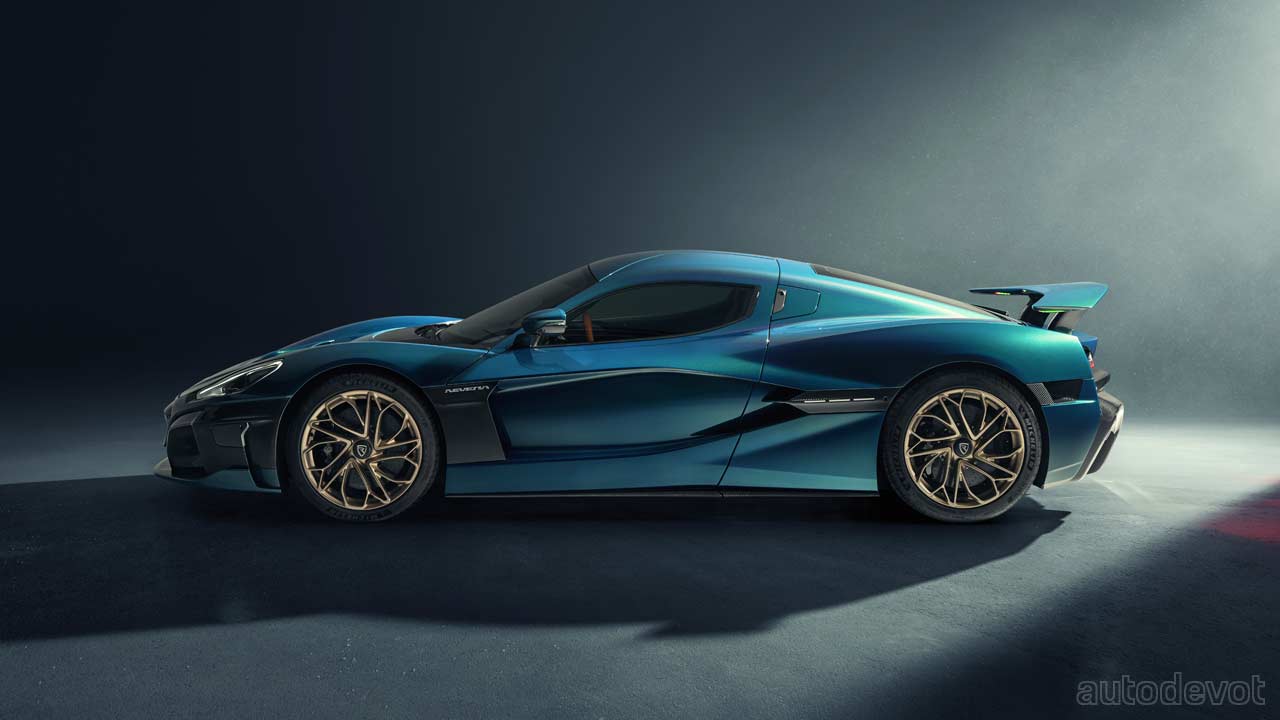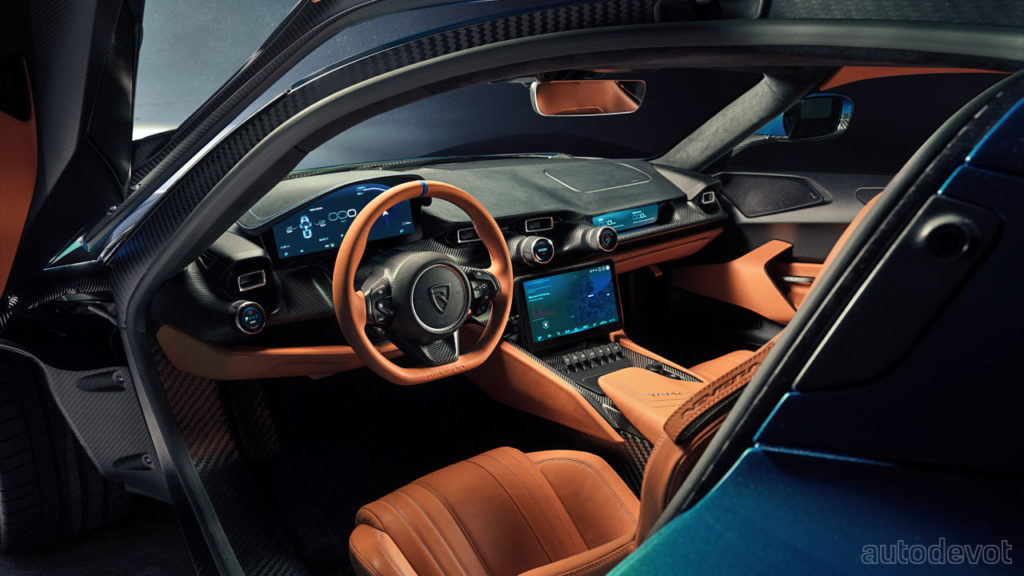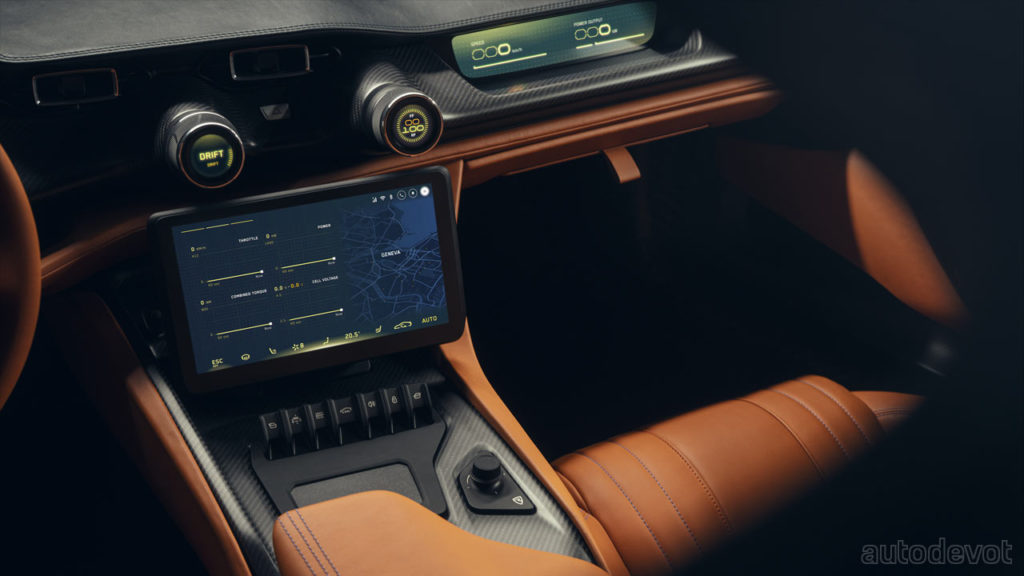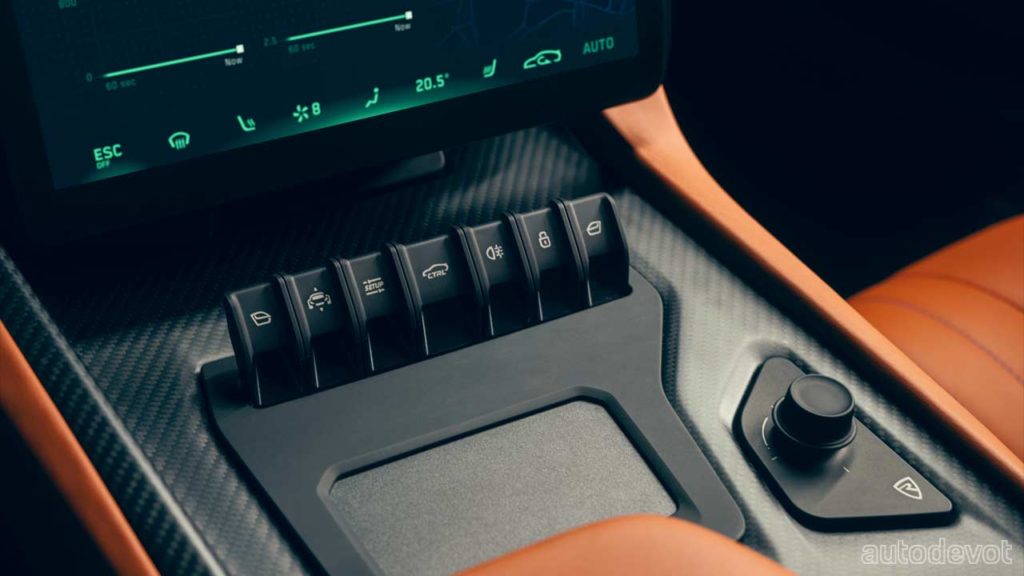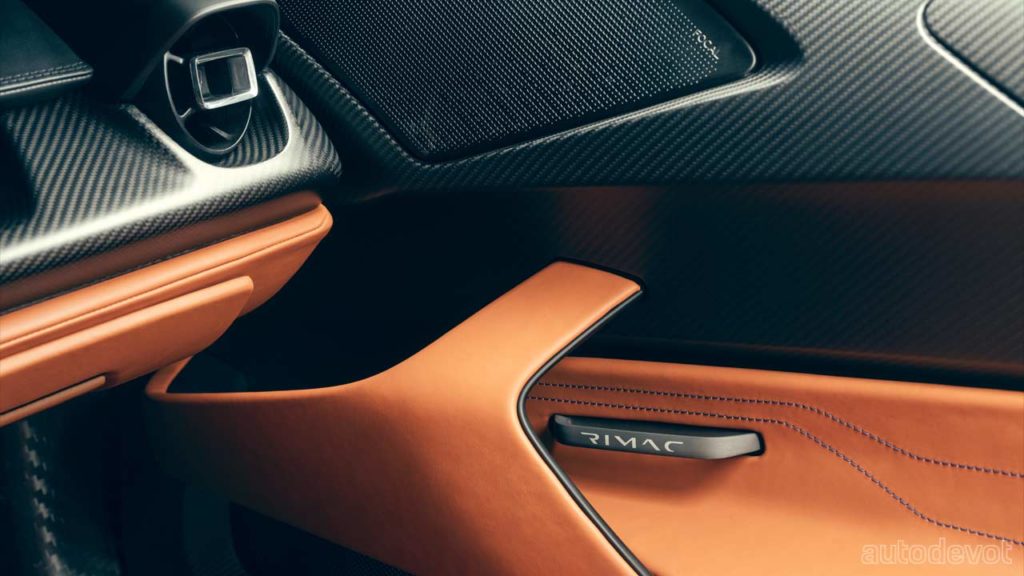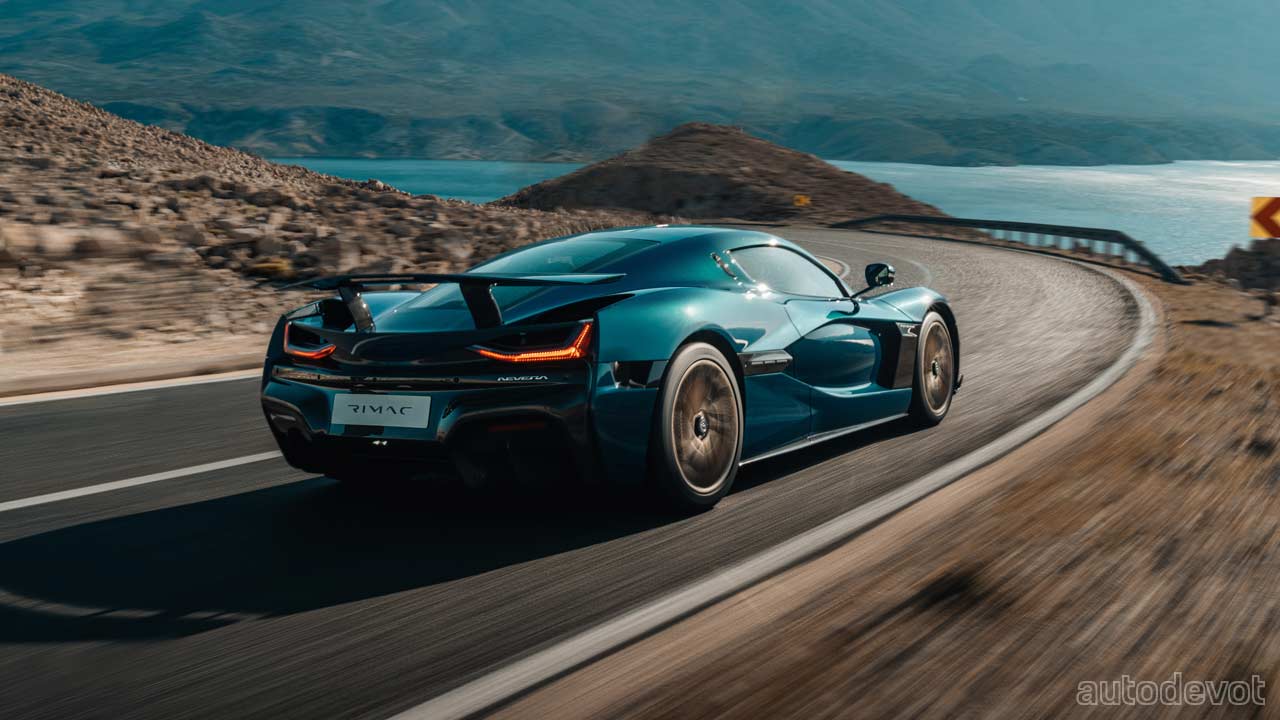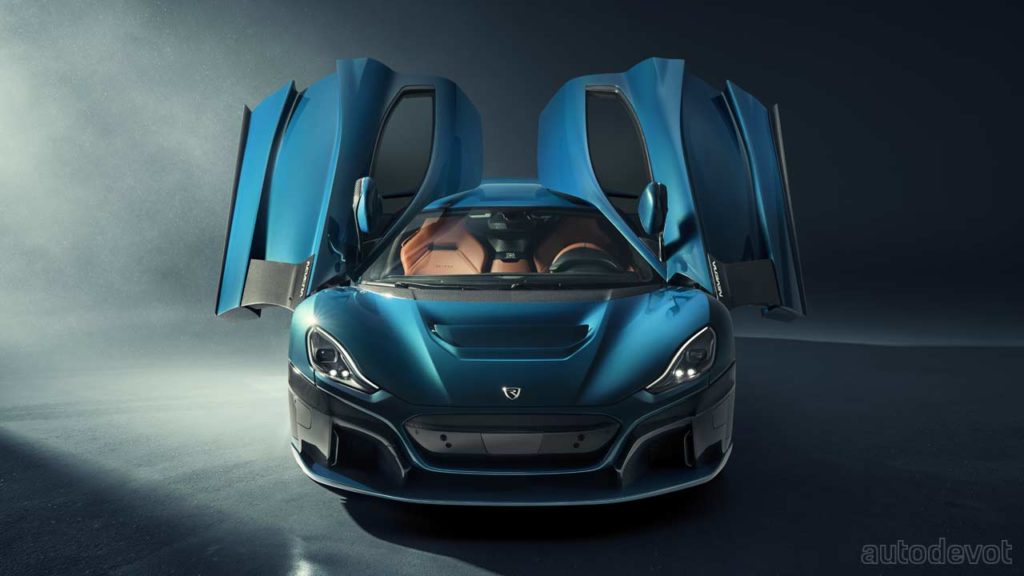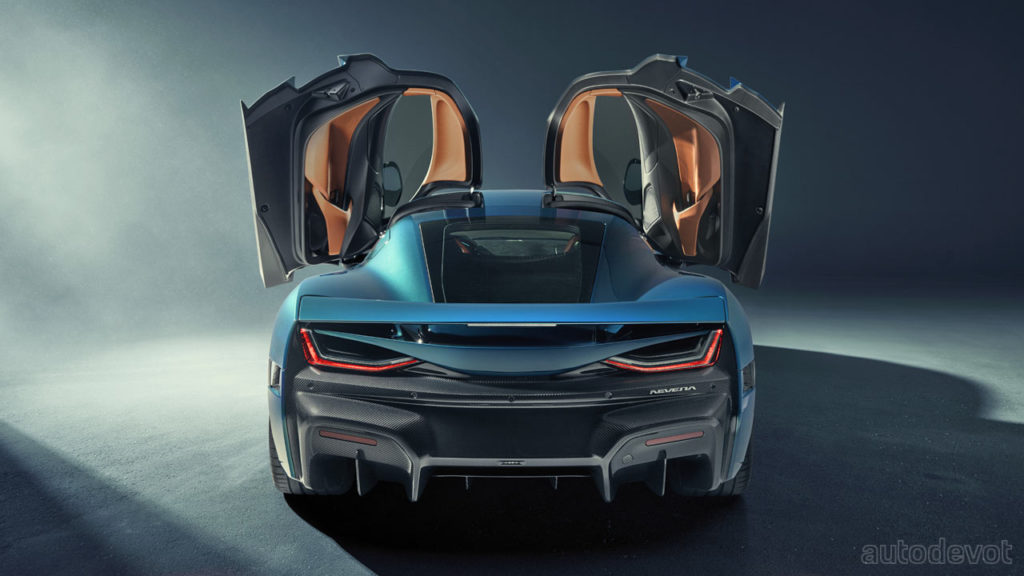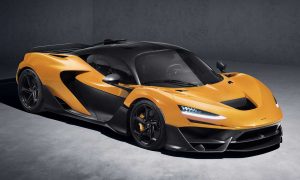Four motors, close to 2,000 hp, 400+ km/h top speed, AI Driving Coach. Interested? Well, get your €2 million ready.
Rimac’s first hypercar was simply called ‘Concept_One’, most likely because everyone at the company was so busy perfecting the car that they had no time to think of a better name. But, that’s not gonna work for the second one; not just because Rimac is now 24% owned by Porsche, but because the second car is better in every possible way. And so, you simply can’t name it C_Two and go home. It has to be named after a force of nature, because, the Nevera is a storm — literal or otherwise.
In simple words, Nevera is the final production version of the C_Two that has been refined and polished and is now ready to do its thing. Unlike the Concept_One, Rimac is planning to build 150 units of Nevera, which means even if a journalist crashes one or two, there’ll still be plenty more left. Before you go fetch your chequebook, I must tell you that the Nevera demands a base price of €2 million.
As mentioned, the engineers and aerodynamicists have refined the bodywork. The intakes and the diffuser are claimed to offer a 34% improvement in aerodynamic efficiency over the early prototypes. The cooling of both the brake and powertrain systems has been improved as well, with 30% improvement at low speeds and 7% at high speeds.
The active aero elements have been perfected as well. The blade on the bonnet, the underbody flap, rear diffuser and rear wing can move independently, all driven by complex algorithms. Switching from ‘high downforce’ to ‘low drag’ mode is claimed to reduce drag by 17.5% to create a 0.3 coefficient of drag. Changing back into ‘high downforce’ mode increases downforce by 326%.
Of course, we need to talk a little bit about its carbon monocoque. Reinforced with 222 aluminium inserts and weighing less than 200 kg (441 lbs), the monocoque sort of encases the H-shaped, liquid-cooled battery pack. It boasts a torsional stiffness of 70,000 Nm/degree.
As for the battery pack, well, it is of a 120 kWh capacity, containing 6,960 cylindrical cells (composed of Lithium-Nickel-Manganese) in 21700 form-factor. The battery pack, which becomes a structural part of the monocoque, is claimed to add 34% stiffness to the monocoque itself. The positioning of the battery pack enables a 48/52 front/rear weight distribution and hence claimed to offer the best possible handling performance. The battery pack can take up to 500 kW DC fast charging! Just to compare, Porsche Taycan‘s max charging capacity is 270 kW. As for range, Rimac estimates 550 km (342 mi).
Brakes
Rimac also claims a cutting-edge technology for the brakes. A complex electro-hydraulic brake booster with brake pedal feel simulator distributes the braking force between the friction brakes and electric powertrain, depending on the battery, powertrain and brake state. For instance — it dissipates kinetic energy through the friction brakes if the battery is close to its thermal limits, or activates more regenerative braking in case the friction brakes are hot. All those transitions happen in the background and are not noticeable by the driver.
Besides a 300 kW regenerative braking from the electric motors, the main stopping power comes from 390 mm Brembo CCMR carbon-ceramic discs with six-piston calipers.
Suspension is taken care of by double wishbones with electronically controlled dampers and active ride height adjustment.
AI Driving Coach
Besides all the delicious-looking exposed carbon fibre and billet aluminium rotary controls and switches, the cockpit also features something called the ‘AI Driver Coach’ — claimed to be the world’s first. The Artificial Intelligence-powered function takes the help of 12 ultrasonic sensors, 13 cameras, 6 radars, and the very latest NVIDIA Pegasus operating system, and offers guidance to optimize and enhance the driver’s on-track performance. The driver can select a race track and the system offers audio and visual guide that helps perfect the racing lines, braking and acceleration points and steering inputs. The hardware required for the AI Driver Coach will be pre-installed and the function will be available in 2022 via an over-the-air update.
Now let’s talk about Nevera’s electric powertrain. It has got not one, not two, but four permanent magnet motors — one for each wheel. They develop a combined 1,408 kW (1,914 metric hp) and 2,360 Nm (1,741 lb-ft) of torque. The motors each are hooked up with a single-speed gearbox (independent at the front; double housing at the rear).
Since there are four motors, the traditional Electronic Stability Program and Traction Control systems have been replaced with Rimac’s All-Wheel Torque Vectoring 2 (R-AWTV 2), which is claimed to make over 100 calculations per second to tailor the level of torque needed for the desired driving style. The driving modes include a Drift mode.
Official performance figures? Oh yea, I guess those are important too. Well, the Nevera is claimed to sprint from 0-100 km/h (62 mph) in 1.97 seconds and continue the acceleration all the way to a top speed of 412 km/h (256 mph). It is also claimed to sprint from 0-161 km/h (100 mph) in 4.3 seconds and 0-300 km/h (186 mph) in 9.3 seconds. Its quarter-mile time is claimed to be 8.6 seconds. Download the technical specifications here.

Leave a Reply
Note: Comments that are unrelated to the post above get automatically filtered into the trash bin.
